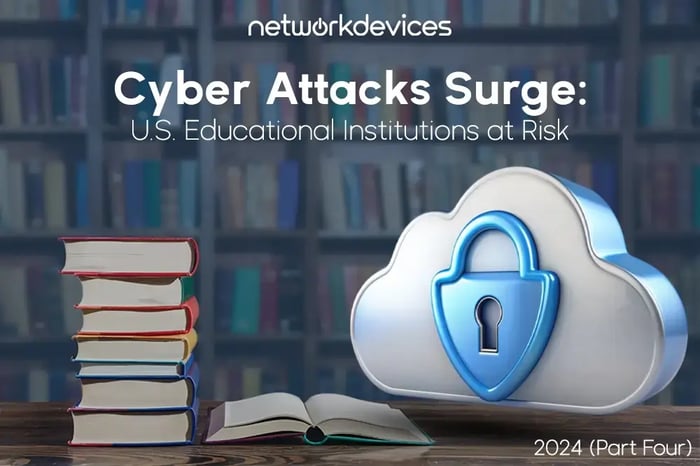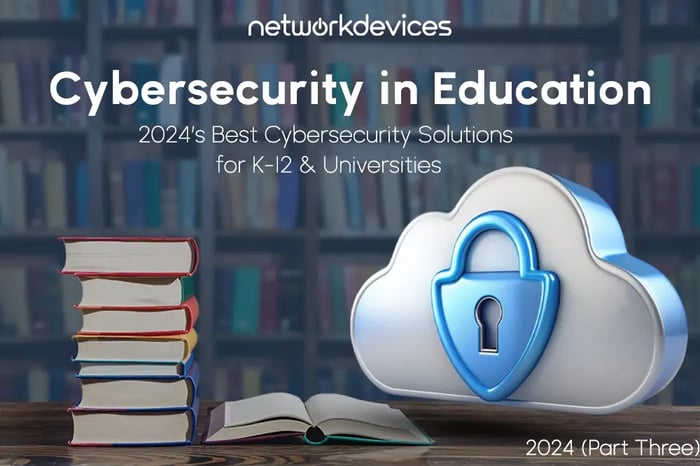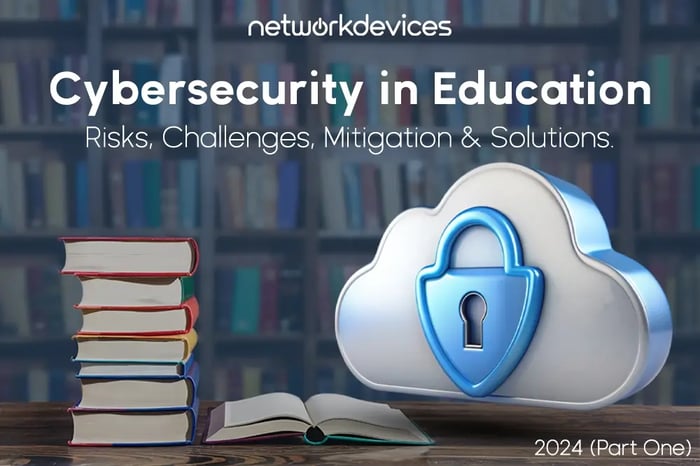You have no items in your shopping cart.

Cyber Attacks Surge: U.S. Educational Institutions at Risk
U.S. schools, colleges, and universities are increasingly becoming prime targets for cyber attacks due to their vast repositories of sensitive data, often combined with insufficient cybersecurity measures.
The rise in digital learning and remote access has further exposed vulnerabilities, making these institutions attractive to cybercriminals seeking to exploit weaknesses for financial gain or data theft.
Alarming Statistics on Cyberattacks in Education
- In June 2024, researchers uncovered a new Ransomware variant named Fog, primarily targeting the education sector in the U.S.
- In July 2024, the Alabama Department of Education experienced a ransomware attack that, despite being partially thwarted, resulted in unauthorized access and theft of data.
- The Comparitech Research data identifies data breaches in US schools that exposed 37.6M records in a total of 3713 breaches.
- Another report by the firm Comparitech unveiled that Ransomware attacks on US educational institutions cost $9.45bn in 2022.
Six Reasons Why U.S. Educational Institutions Are on Target
U.S. educational institutions are increasingly targeted due to their vast amounts of sensitive data and often outdated cybersecurity measures. Combined with inadequate budgets and insufficient awareness, these factors create an appealing environment for cybercriminals seeking to exploit vulnerabilities.
1. Increased Reliance on Digital Learning Platforms
The growing dependence on digital learning platforms has significantly expanded the digital attack surface, leaving many schools vulnerable to cyber threats. Remote learning environments, while necessary, often lack robust cybersecurity in education, resulting in increased risks of ransomware, phishing, and data breaches.
- Digital learning platforms expand the attack surface, increasing cyber vulnerability.
- Weak cybersecurity in online systems exposes institutions to ransomware attacks.
- Phishing campaigns are increasingly targeting digital platforms in education.
- Insufficient encryption and access controls leave sensitive data at risk.
- Remote learning has highlighted gaps in security protocols, demanding urgent upgrades.
2. The Vulnerability of Legacy Systems and Outdated Infrastructure
Legacy systems and outdated infrastructure in U.S. educational institutions present significant cybersecurity risks, as they cannot often defend against modern threats.
These outdated systems are more susceptible to exploitation, creating entry points for cybercriminals to launch attacks such as ransomware, data breaches, and unauthorized access.
- Legacy systems lack patches and updates, making them vulnerable to exploits.
- Outdated infrastructure can't support advanced security measures, increasing risk.
- Cybercriminals target older systems with known vulnerabilities for easy access.
- Incompatible legacy systems hinder the integration of modern cybersecurity solutions.
- Aging infrastructure exposes educational networks to higher risks of breaches and attacks.
3. The High Value of Educational Data to Cybercriminals
Schools and universities hold vast amounts of sensitive data, including personal information, financial records, and intellectual property. Due to the high value of this data, cybercriminals are increasingly targeting educational institutions, often using ransomware to demand payment in exchange for restoring access.
- Student and staff personal data are lucrative targets for identity theft.
- Financial records stored by institutions are prime targets for ransomware demands.
- Intellectual property, such as research data, is valuable on the black market.
- Compromised educational data can be sold or used in further phishing attacks.
- Cybercriminals exploit weak security in education to access high-value data assets.
4. Insufficient Cybersecurity Budgets and Resources
Many educational institutions struggle with limited cybersecurity budgets and resources, which hampers their ability to implement robust defenses against modern cyber threats.
These financial constraints leave them more vulnerable to attacks, as they often rely on outdated systems and lack comprehensive security measures.
- Limited budgets prevent the deployment of advanced cybersecurity technologies.
- Insufficient resources lead to gaps in security staffing and incident response capabilities.
- Financial constraints result in delayed updates and patches, increasing vulnerability.
- Lack of funds hinders the adoption of proactive threat detection and monitoring tools.
- Inadequate investment in cybersecurity training leaves institutions exposed to human errors.
5. Inadequate Implementation of Advanced Security Solutions
Educational institutions often fall short in adopting and integrating advanced security solutions, leaving them exposed to evolving cyber threats.
Inadequate implementation of technologies like Next-Generation Firewalls (NGFWs), Secure Access Service Edge (SASE), and Multi-Factor Authentication (MFA) weakens their overall cybersecurity posture.
- Failure to deploy NGFWs leaves networks vulnerable to sophisticated attacks.
- Lack of SASE integration results in inadequate protection for cloud and remote access.
- The absence of MFA increases the risk of unauthorized access to critical systems.
- Inadequate use of threat detection tools limits visibility and response capabilities.
- Poor implementation of security updates and patches exacerbates vulnerability to exploits.
6. Lack of Cyber Awareness and Knowledge
Many educational institutions face heightened risk due to insufficient cyber awareness and knowledge among staff and students. This lack of understanding contributes to poor security practices, making the institution more susceptible to cyber threats such as phishing, malware, and unauthorized access.
- Inadequate training results in poor handling of phishing and social engineering attacks.
- Lack of awareness leads to weak password practices and inadequate use of security tools.
- Insufficient knowledge prevents effective identification and reporting of suspicious activities.
- A limited understanding of cybersecurity policies contributes to non-compliance and vulnerabilities.
- The absence of ongoing education results in outdated defenses and increased risk of breaches.
The Financial Impact of Cyber Attacks on Educational Institutions
According to research by CDW, over 43% of respondents reported breaches that resulted in downtime costs between $1 million and $10 million, with 8% experiencing breaches costing more than $10 million.
The Government Accountability Office also reported that learning loss due to a cyber attack typically ranges from 3 days to 3 weeks, with recovery times extending from 2 to 9 months.
How Cyber Attacks Damage Institutional Credibility?
Cyber attacks and data breaches compromise sensitive information, significantly impacting the value and reputation of educational institutions. This can lead to financial losses, legal liabilities, and diminished trust.
The breach often results in costly recovery efforts, potential regulatory fines, and long-term damage to institutional credibility, affecting student enrollment, funding, and partnerships.
Conclusion: Addressing Cybersecurity Challenges in U.S. Educational Institutions
U.S. educational institutions are at an increasing risk of cyber attacks due to their reliance on digital learning platforms, legacy systems, and insufficient cybersecurity resources. The high value of their data, combined with outdated security measures, exacerbates these vulnerabilities.
Addressing these challenges requires investing in cybersecurity solutions and proactive measures to safeguard sensitive educational environments.
For more information on cybersecurity in education, you can read our articles: “Cybersecurity for Schools & Higher Education in 2024,” “Top 5 Cyber Threats in Education for 2024,” and “2024's Best Cybersecurity Solutions for K-12 & Universities”.






